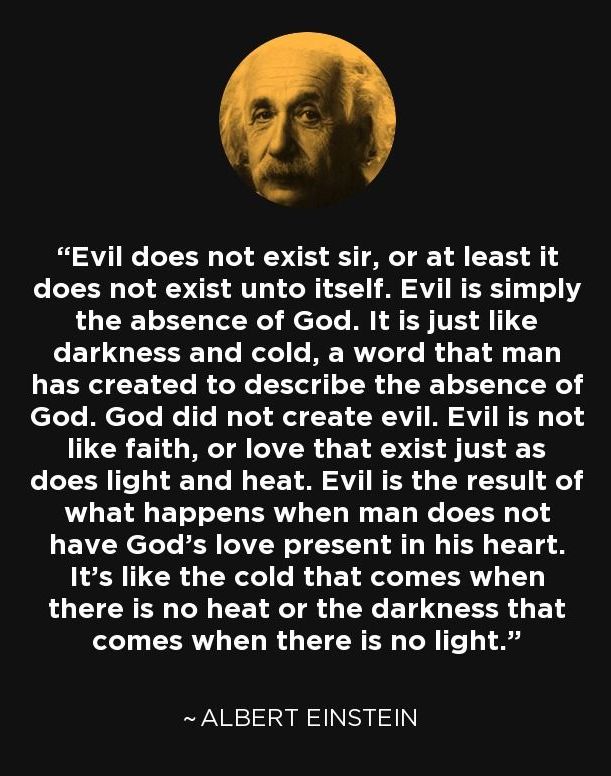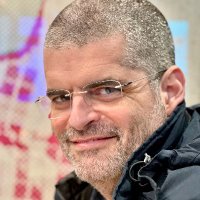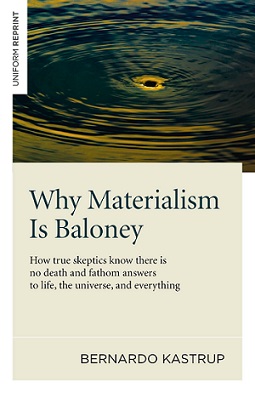|
home | what's new | other sites | contact | about |
|||||
|
Word Gems exploring self-realization, sacred personhood, and full humanity
Editor's 1-Minute Essay: Being
“Nothing seems of more importance towards erecting a firm system of sound and real knowledge … than to lay the beginning in a distinct explication of what is meant by thing, reality, existence, for in vain shall we dispute concerning the real existence of things, or pretend to any knowledge thereof, so long as we have not fixed the meaning of those words.” Bishop George Berkeley (1685 – 1753)
why 'being' ranks among the very most important topics
coming to terms The etymological structure of many words cloaks the hard questions that philosophers have asked for thousands of years. “Exist” literally means “to stand out”; that is, if something has being, it stands out from something else. What is that background “something” against which objects of the world are measured? And the related, abstruse “existential,” in its own way, addresses the same. “Real estate” is an interesting term. “Real” is from the Latin “res” meaning “thing.” And “estate” comes from “to stand, to make firm,” and by extension this “standing” leads us to “status” and social position. In other words, the “landed gentry” were considered better and upper class because they were supported by something “real,” solid, and substantial. This gave them “standing” in the community. Even the word "substantial" means "a standing under," that is, a support, propping up something we deem to be "real." “Realize,” in its underpinnings, means “to make into a thing.” Before, it had been only a shadowy idea, but now it’s been “realized,” or “reified,” made into a “thing.” We could list a great many here, and you’ll discover more on your own. In law school, decades ago, I noticed how the history of the law is replete with allusions such as these, relating to status and what's real. But notice how all this has to do with being.
the concept of ‘being’ subsumes every statement we make Dr. Adler: “The words ‘is’ and ‘(is) not’ are probably the words most frequently used by anyone. They are unavoidable, by implication at least, in every statement. They have, in addition, a greater range of meaning than any other words. “Their manifold significance seems to be of a very special kind, for whatever is said not to be in one sense of being can always be said to be in another of its senses. Children and practiced liars know this. Playing on the meanings of being, or with 'is' and 'not,' they move smoothly from fact to fiction, imagination to reality, or truth to falsehood.” Editor’s note: Recall from Darrel Huff’s book, “How To Lie With Statistics,” the author explained that raw data is neutral and might be presented variously to offer evidence for “is” or “is not”. Huff summarized with, “They can’t pin it on you,” even if you’re called to task, because you can always respond that there's another way of looking at the issue. Lawyers, too, if skilful, can argue both sides of an issue, even, convincingly; because “is” and “is not” are slippery little devils. Adler reminds us that “children” often play this game of oppositional banter: “is”! “is not”! – they shout, back and forth; “practiced liars” also know how to bend definitions, as we endure their propaganda in the news every day.
everything, which can be thought of, exists as some sort of object Philosopher William James points out that “in the strict and ultimate sense of the word ‘existence,’ everything which can be thought of at all exists as some sort of object.” Editor’s note: What does James mean by “strict and ultimate sense of the word existence”? All objects, anything with being, anything that “exists,” will “stand out” from the nothingness of non-being. These objects might exist around us in the world, or they may be mythical, or of the historical past, or they may be objects of the imagination. We note that these objects might exist in (1) 3-D space or (2) only as objects of the mind. This leads to a paradox that even the “nothing” of mental objects is “something”; that is, even non-being, some say, has being, for, before we can say “non-being is not,” we find ourselves saying “non-being is.” “Nothing” is at least an object of thought; it exists in the mind. It has a degree of reality for the mind apprehending it. Editor’s note: In my own view, however, I tend to discount this reality of mental objects. To say that “nothing” is “something” strikes me as playing with words.
the term ‘being’ represents the highest abstraction The dictionary definition of abstraction: "The process of considering something independently of its associations, attributes, or concrete accompaniments." Among all words, being allies itself most loosely with “concrete accompaniments.” It is the most universal of predicates – the “is” or “is not” -- and the most pervasive subject of discussion. Being represents itself via two modes of expression:
‘being’ might be construed as both the emptiest and the richest of all terms in the vocabulary of thought How being becomes the emptiest of terms: All words other than being tend to classify things. “All other names,” or terms, says Aquinas, “are either (1) less universal, or … (2) add something above it, at least in idea.” The term being divides the world into groups of “something” or “nothing.” But the word “chair,” for example, divides all the world into categories of “chair” and “non-chair.” The category of “chair” is less universal than being. “Chair” applies only to objects with “chair-ness,” but being, far more universal, applies to all objects. If we attempt to categorize objects of the world according to the “chair” standard, we immediately begin to prune and pare down our choices, as the quality of “chair-ness” will be found wanting in most objects. According to this method of categorization, chairs only will be on the list. But if we categorize objects according to ones possessing being, then the “chair-ness” distinction is removed from our consideration, along with all other traits. At the end of this winnowing process, only the trait of being remains – the fact that the object is, in some manner. According to this method of classification, being is the “emptiest” of all terms, because it is the commonest. The quality of being is the very least that can be thought of anything. “On this view, if all we are told of something is that it is - that it has being - we learn as little as possible about the thing.” How being becomes the richest of terms: Adler: “There is an opposite procedure by which the term being has the maximal rather than the minimal significance. Since whatever else a thing is, it is a being, its being lies at the very heart of its nature and underlies all its other properties.” With this view, being serves as foundation of all other attributes which an object might possess. This is what Aquinas meant with the phrase "add something above" the term being. The adding supplies the riches. Adler: “…in the Judaeo-Christian tradition, being, without qualification, is taken as the most proper name for God. When Moses asked God His name, he received as answer: ‘’I AM THAT I AM . . . Thus shalt thou say unto the children of Israel, I AM hath sent me unto you.’ Used in this sense, being becomes the richest of terms - the one which has the greatest amplitude of meaning.” In other words, to say that Being is the name of God signifies that Divinity is not only existent or self-existent but the summation of all perfections, virtues, and positive attributes.
Philosophers debate: is there a cosmic unity, a grand whole of being, or is there a plurality of individual, separate and isolated, beings? Is being one or many? Is there a central infinite being, whose essence supplies to itself a continuing and unending existence? and, in this vein, are we “finite beings, which do not necessarily exist of themselves but must be caused to exist”? There is much debate by philosophers down through the centuries on this question. Much of it I will not address here; you may study the discourse in Dr. Adler’s essay. Thousands of afterlife reports, veridically buttressed by scientific evidence, leave us with little doubt concerning this issue. The Spirit Guides, time and again, refer to our connectedness with Source; that our being and existence is of a derivative nature; that we enjoy life, even immortal life, as gift from Mother-Father God; that spirituality itself is to be defined as more closely attuning oneself with central Being. Few precepts in afterlife lore are as well established. The apostle Paul, quoting an ancient thinker, had it exactly right with words ascribed to him in the book of Acts:
Editor’s note: While we’ve established, in 50 articles, that the Bible is not an infallible work, delivered by angels, there are, in fact, sections of Scripture which do contain much truth; these, no doubt, represent channeled information from the other side, via the agency of ancient psychic-mediums, also known as “prophets.” The following is taken from an article on the “God” page:
The Eternal our God is One! - that is, God is Singular Pervasive Reality Dr. Gerald Schroeder, MIT physicist and Hebrew scholar, is one of the great teachers. The following is an excerpt from one of his excellent books, "The Hidden Face of God." Therein, he explains that "the Shema" - an epicentral prayer of Judaism, to which Jesus himself drew special attention - speaks to the fact that God exists as Singular Pervasive Reality! "Hear O Israel, the Eternal our God, the Eternal is One!" is no banal pronouncement that there is but one deity. This is not the point of the Hebrew text. Dr. Schroeder enlightens us:
the highest state of being, that which is most real, has no opposite Yes, “there is nothing else.” “The Eternal is One.” God represents “singular pervasive reality.” Only consciousness, only Universal Consciousness, is real. Editor’s note: See dozens of quotations from the quantum-father physicists, arguably, the greatest scientists of history, asserting the primacy of conscious over matter. Stated differently, that quality of being which constitutes ultimate reality, that which is most real, has no opposite. God has no opposite. All virtues of God have no opposite. It is only with the dysfunctional ego that we enter a world of duality. Everything that has a beginning is also subject to an ending. But there exists a domain beyond the reach of time’s degradation. There, things simply exist, eternally, have always been, have no opposite, no duality, and do not suffer loss.
there are degrees of reality, determined by independent or dependent being Adler: According to Descartes, “There are diverse degrees of reality, or (the quality of being an) entity. For [an entity with essential] substance has more reality than accident [“an entity contingent upon the existence of something else”] … and infinite substance has more [reality] than finite substance.” Its being is independent, theirs dependent.
contingent beings and participatory beings These are beings, as philosophers use the terms, existing without being inherent in themselves.
the discussion of being began with the Greeks Adler: “The Greeks, notably Plato and Aristotle, began the inquiry about being. They realized that after all other questions are answered, there still remains the question: What does it mean to say of anything that it is or is not? After we understand what it means for a thing to be a man, or to be alive, or to be a body, we must still consider what it means for that thing simply to be in any way at all; or to be in one sense, and not to be in another.”
an historical accident that the inquiry concerning being is called ‘metaphysics’ Adler: It is “the name which, according to legend, the ancient editors gave to a collection of writings in which Aristotle pursued this inquiry. Since they came after [Aristotle’s] books on physics, they were called 'metaphysics’, on the supposition that Aristotle intended the discussion of being to follow his treatise on change and motion.”
ontology Adler “If one were to invent a word to describe the science of being, it would be ‘ontology’ [literally, ‘to be’ + ‘study’] not ‘metaphysics’ or even ‘theology.’ Yet ‘metaphysics’ has remained the traditionally accepted name for the inquiry or science which goes beyond physics — or all of natural science — in that it asks about the very existence of things, and their modes of being.”
Editor’s summary and conclusion Dr. Adler’s survey of this 2500 year-old debate touches upon other aspects of being. At the end, however, neither he nor the many contributing philosophers offers final authority on the question “what is real?” Much of the debate I’ve not recounted here, because much of it is not particularly insightful or helpful to our enquiry. The thinkers of the past were not privy to certain information that we possess. Questions concerning being are greatly aided today with advancements in quantum physics. The “Double-Slit” experiment reveals that matter comes into being – there’s that word again – when an observing consciousness “takes a measurement.” When this occurs, quantum waves of possibility, of potential particles, collapse into actual particles, and become part of the “knowledge rule set” of this world. Also see the "Inferential Life" series of writings. We do not know, of course, everything concerning the nature of being and reality, but we, today, know much more than those of earlier times. We have advanced science working for us. We have also obtained, during the last 175 years, massive amounts of information concerning post-mortem survival of the human spirit and our future life in Summerland. Scientists on the other side have greatly aided our quest concerning the nature of reality and being. We have many thousands of testimonies from, and many hundreds of actual appearances by, spirit-persons on the other side; from them, we know much about the nature of being and reality. Much could be said here, but it’s already been said – in several thousand pages on the Word Gems site. We know that ultimate reality is not matter-based. Only consciousness, Universal Consciousness and Intelligence, is real. And what does "real" mean in this context? It could mean many things but not to exclude a primacy, a ground, a level one, of all being. Only Universal Consciousness possesses reality to the highest degree; whatever aspect of reality we might attain to will be determined by how closely we align ourselves with Source. Universal Consciousness is the primary essence of the cosmos; everything we see about us in the universe – including ourselves, body and spirit -- derives from this essential “substance”; which is not a substance in the ordinary meaning of the term. To learn more, to begin to surmount these weighty questions, my suggestion is to first review the information on the “Theory Of Everything” page.
Elenchus. What a profound comment, "only that which has no opposite constitutes highest being." Kairissi. This subject of what’s real affects everything. But let's explore this, step by step, focusing on the question, is love real? E. I think we have everyone's attention now. K. Love isn’t an object of 3-D space, but it’s certainly an object of the mind. E. Are we going to allow the “nothingness” of thought to be counted as something real? K. We’ll have to tread carefully here because many things that we count real are invisible to us. Like electromagnetic waves. E. Or even quantum possibility waves. K. That’s really tricky. Quantum waves exist in potentia, not in the 3-D world. And yet, in some sense – can we use the word exist? – they do seem to have some kind of reality because math equations that treat probability waves as just another wave – like sound, water, light – we get answers to the math problems that work and well describe phenomena of our world. And so, in some sense, we might have to concede that probability waves enjoy a kind of reality. E. This is not an easy subject. And getting back to your question about love, if we discard it as a "nothingness," what do we do about other non-tangibles such as consciousness? K. Or, the big question – God! who is not part of the 3-D world either. E. It’s easy to get confused in all this. K. After the discussion in the above article, I thought I knew a little about this subject of being; but I suddenly seem to know less. E. I think we’re just realizing more about what we don’t know. K. Well, let’s talk about God. “God” is an object of thought, but S/he is also deemed to be Universal Consciousness. E. We need to be careful about saying all things invisible might not be real or a thing. Some things – and now I’m already using the word in question – K. It’s hard to talk about this as being and reality impinge upon, and very closely so, every topic. E. Let me try again: Some things are invisible only because they’re vibrating at a high frequency. K. Electromagnetic waves would be an example; actually, so would pretty much all forms of energy. E. This aspect of “high rate of vibration” also applies to the spirit world. We can’t see the discarnate because of the elevated vibratory levels of their matter. But we’ve come to know that people and things of the other side are just as real as we are. K. And beyond the factor of vibration, some things are invisible to us because they exist in another dimension, inaccessible to us. I would venture to say that “God” fits in this category. E. And maybe “consciousness” should be viewed in the same light. K. I recall the discussion between Tolle and Russell who said that consciousness should not be viewed as an object of the world; that, to speak of it as a thing falsifies any concept of its nature. But could it be viewed as an object in another dimension? E. Consciousness must be something because it is the source of all life. It provides the spark, the engine, of life. K. Where does this leave us concerning our original question, is love real? E. Well, you’re our local personification of Love, so why don’t you tell me. K. mmm… True love is more than an object of the mind. It’s an object in God’s mind. What I mean to say is, the ego has its counterfeits of love, but these are just expressions of the ego’s wanting and needing. True love never wanes, never leaves. It’s a part of God’s very nature. And when we “go within,” we can begin to experience this for ourselves. E. We’ve learned that true love reflects a higher level of consciousness. K. Which, I believe, is another way of saying that true love is part of God’s mind. E. It’s strange, isn’t it, Kriss? We wanted to avoid ascribing reality to anything we can’t touch, but, as we look at this subject more closely, we find that the things most important, most real to us in life – this one and the next – are those which are part of God; those things which are most out of reach to the five senses. We might never apprehend love as a tangible object - but it touches us, though. K. Yes… it touches us… and I think that's why we use the word "feeling" to describe love.
|
|||||
|
|





